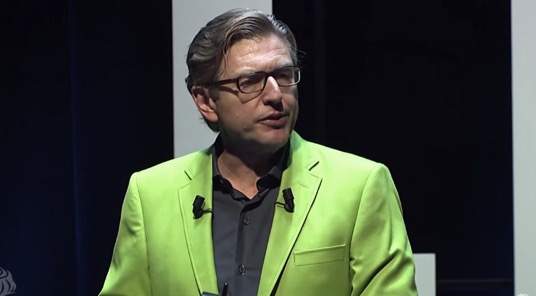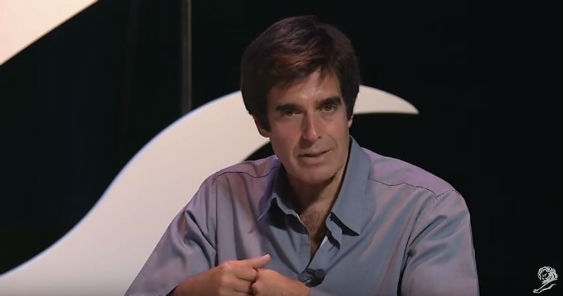CANNES – Keith Weed, Chief Marketing and Communications Officer of Unilever guides advertisers and marketers on how the industry can transform to market for people in everything they do.
Keith Weed made reference to his talk last year where he made the distinction between marketing to people (broadcasting to a captive audience), marketing with people (creation and curation with our audience), and marketing for people which he proceeds to discuss lengthily but in a very convincing and engaging manner.
He shows portions of the 221 minutes of videos of the 20+ conversations he had with ad agencies, advertisers and media agencies where three recurring themes surfaced: idea, trust and transformation.
Idea, he says, involves two important things: attention and engagement. He cites a study made by Microsoft last month which says that in the last 15 years our average attention span has dropped from 12 seconds to 8 seconds. A goldfish has 9 seconds of attention span and he underlines that we now officially have less attention than a gold fish, “So it’s not It’s not about your best or most creative idea but what is your most creative idea in 5 seconds.” And that challenge is going to increase as we continue to consume video in mobile.
Dick Estollo, CEO,Twitter – “ The single biggest change that’s happening right now is this transition to native mobile video…video that’s primarily produced for consumption on mobile.”
Sheryll Sandberg, COO, Facebook — “The mobile transition is the fastest adoption to a communication technology the world has ever seen. We are marketers and we have to reach people where they are and really fit into their lives.”
Eddy Moretti, Chief Creative Officer, Vice Media – “The future of mobile and contextual location-sensitive storytelling and information and advertising, I think, that’s like the holy grail.”
Engagement, on the other hand, is making our consumers connect with and care enough about our brand that it drives them to share. How do we achieve both? The answer is the balance between creativity and effectiveness, magic and logic, art and science. Weed mentions that technology brilliantly connects but it’s not just about technology, it’s about ideas and if we focus on the idea we will get attention and engagement as well.
Sir John Hegarty, Founder, BBH – “It isn’t any longer about the size of your budget, it’s about the size of your idea and the breadth of your idea. An idea that connects with people and inspires and charms them.”
On trust, Weed differentiates on trust between marketers and the consumer and trust between the different players in the industry. He says that the industry is in chaos and in change so it’s more challenging to build trust.
Michael Roth, CEO, Interpublic Group – “Relationships has changed. In the old days, it used to be a single source…in the area of specialization what developed was digital experts, media experts, creative experts, small shops, distribution shops and now what’s happening is that the clients are looking to make things simpler. The good news is there has to be expertise sitting in the table, the challenge is how do you integrate all of those expertise.”
Syl Saller, CMO, Diageo – “There’s not enough honesty between clients and agencies. Agencies are still selling work. Clients aren’t listening enough.”
Eric Salama, CEO, Kantar — “It’s become a more complex business so we end up spending more time managing that complexity as opposed to focusing back on what the people really need, what are the human and cultural truths we are trying to tap into, and how do we reach them.”
Sir Martin Sorrell, CEO, WPP – “The structures and processes are more complicated. And unless we change, we’re gonna get nailed.”
This chaos and fragmentation is pulling brands apart so there’s a need to build trust among the different players to truly integrate and bring the business back together again. The time when clients went to one agency to really manage their whole brand and the way the brand connected to their consumers need to come back in some shape or form.
Another element of trust, Weed discusses is about measurements: viewability and verification. He points out that the industry needs to start defining -from an advertiser’s side- what are the measures that we want to see, but also from the vendor’s side -what are they willing to engage with us on. There is a need to establish standards to make sure that people get what they pay for in digital ads.
To summarize, he pushes for transformation and says that to succeed in this changing world there’s a need to think differently and to engage where the innovation is and where the ideas are. He cites as an example a project of Unilever Foundry which involves working with start-ups from pitch to pilot.
Weed cites another area of transformation as the brands themselves. He emphasizes that brands need to have more dimensions and a purpose. People don’t just buy products they buy into an idea. He cites as an example Unilever’s corporate brand called brightfuture.unilever.com which features young global activists selling their idea of change. This is connecting purpose with purchase and Weed says if we can do that we can build real trust into our brands, our industry and our business. His notion of messaging with some social good is shared broadly by colleagues.
Jostein Solheim, CEO, Ben & Jerry’s – “ The future of our industry will depend on completely embracing radical transparency. We’re going to be inviting people into our brand’s world and when they come we want to entertain them and teach them something new. We want to engage them in what the product can do but also what we do as a company and for the world.”
Weed ends by enjoining advertising, marketing and media practitioners to start thinking about new business models. He cites as an example Unilever’s sustainable-living brands (“brands with a purpose”)which accounted for half of the company’s growth last year and grew twice as fast as their other brands. He enunciates, “ Sustainability (purpose) built into the core of our brands is delivering sales. But we need to transform the way we do business and mainstream sustainability. We can do well and do good. We can market for people. We can make marketing great again.”







